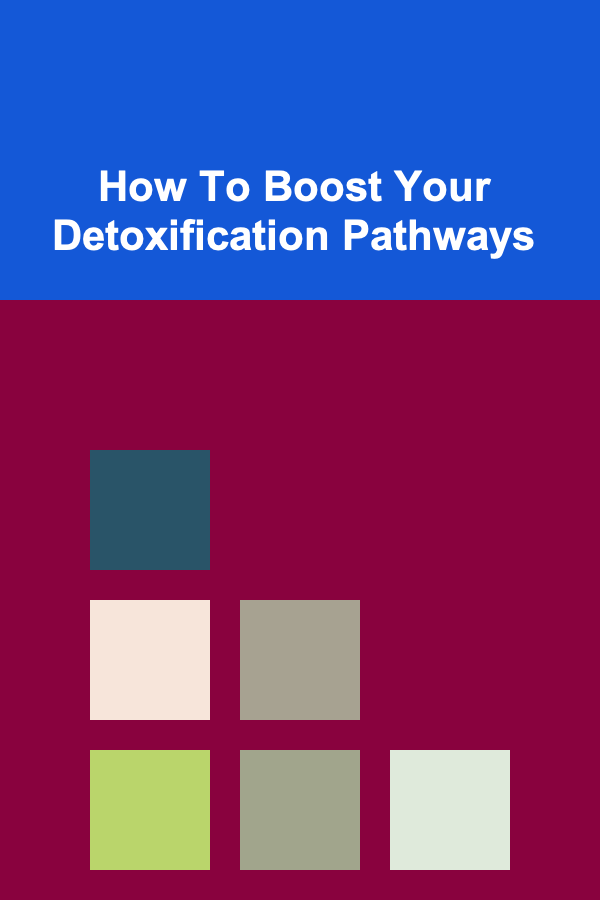How to Integrate Your Period Tracker Planner with Other Wellness Tools
ebook include PDF & Audio bundle (Micro Guide)
$12.99$6.99
Limited Time Offer! Order within the next:
In today's world, managing one's health is more than just routine doctor visits and basic exercise. Many individuals are adopting wellness tools and apps to streamline their health routines, and period trackers are increasingly a central part of this wellness journey. Tracking menstrual cycles has become essential for understanding one's body, health patterns, and overall well-being.
Incorporating a period tracker into your wellness plan allows for a holistic view of health, as it provides insights into not only menstrual cycles but also hormonal fluctuations, mood patterns, and more. However, when used alongside other wellness tools, the effectiveness of a period tracker can be significantly enhanced. Integrating a period tracker planner with other wellness tools can create a personalized and synchronized approach to health management.
In this article, we will explore how to seamlessly integrate your period tracker with other wellness tools such as fitness trackers, mental health apps, diet planners, and sleep monitors. We will also discuss how this integration can lead to better tracking, more comprehensive insights, and a more balanced life.
Why Integrate Your Period Tracker with Other Wellness Tools?
The integration of your period tracker with other wellness tools offers several key advantages:
- Comprehensive Health Overview: A period tracker offers valuable information about your menstrual cycle, but when combined with other wellness tools, such as fitness or sleep apps, you can gain deeper insights into how your cycle affects your overall well-being.
- Data-Driven Decisions: By correlating data from multiple sources (e.g., nutrition, exercise, stress levels), you can identify patterns and adjust your lifestyle accordingly.
- Preventative Health: Tracking your period and syncing it with other aspects of your health (like diet and exercise) allows you to proactively manage things like PMS, cramps, and fatigue.
- Informed Lifestyle Choices: Understanding how your cycle impacts everything from energy levels to emotional well-being helps you make more informed choices about daily activities, diet, and exercise.
- Personalized Wellness Plan: Integration of your period tracker data with other tools allows for the creation of a customized wellness routine that aligns with your menstrual cycle phases (e.g., focusing on rest during your luteal phase, or increasing physical activity during your follicular phase).
Key Wellness Tools to Integrate with Your Period Tracker
To fully benefit from integrating your period tracker with other wellness tools, consider syncing it with the following:
1. Fitness Trackers
Fitness trackers (e.g., Fitbit, Apple Watch, Garmin) are invaluable tools that monitor your physical activity, heart rate, sleep quality, and more. Integrating your period tracker with a fitness tracker can provide insights into how your menstrual cycle affects your energy, exercise performance, and physical activity levels.
How to Integrate:
- Track Energy Levels: Periods of high energy (e.g., follicular phase) can be synced with increased activity or workouts. When you experience lower energy (e.g., during menstruation or the luteal phase), you can adjust your fitness routine to accommodate rest.
- Adjust Intensity: Many fitness trackers allow you to log your workouts, which you can then correlate with your cycle data. If you notice that you experience more fatigue during the luteal phase, you can plan for gentler exercises like yoga or swimming, while reserving higher-intensity workouts for your follicular or ovulation phases.
- Monitor Sleep and Recovery: Periods of hormonal fluctuations may affect sleep quality. A fitness tracker that tracks sleep can provide data on how your cycle influences your rest and help you make adjustments to improve sleep during certain phases.
2. Nutrition and Diet Planners
Food intake is another critical component of overall wellness. Different phases of the menstrual cycle can affect hunger, cravings, and metabolism. Integrating a period tracker with a diet planner helps you stay mindful of how food choices and nutritional intake impact your body at various times during your cycle.
How to Integrate:
- Track Nutritional Needs: Certain phases of your cycle, like the luteal phase, may require more calorie-dense foods, while the follicular phase may see an increase in metabolism. By syncing your period tracker with a nutrition app (e.g., MyFitnessPal), you can track the best foods to eat during each phase to reduce bloating, cravings, and fatigue.
- Manage PMS Symptoms: Many people experience symptoms like bloating, cramps, or mood swings before or during menstruation. By connecting your period tracker with a nutrition app, you can develop a diet that incorporates foods rich in magnesium, fiber, and vitamins that ease these symptoms.
- Hydration and Water Intake: Some apps track water consumption, allowing you to adjust your hydration levels based on your cycle. For example, you may need more hydration during your ovulation phase when your body temperature is slightly higher, or during menstruation when you may experience fluid loss.
3. Mental Health and Mood Trackers
Hormones play a major role in mood fluctuations throughout the menstrual cycle. Integrating a period tracker with mental health apps (e.g., Calm, Headspace, Moodpath) helps you understand how your emotional well-being aligns with your hormonal changes.
How to Integrate:
- Track Mood Variations: Use mood-tracking apps to log emotional shifts, which are often linked to hormonal changes. For instance, you may experience irritability or anxiety during the luteal phase. By correlating mood data with your period tracker, you can identify patterns that help you manage emotions better.
- Mindfulness and Stress Management: Integrate period cycle tracking with mindfulness tools that prompt you to meditate or practice deep breathing when emotional stress rises during PMS or the menstrual phase.
- Therapeutic Insights: Some mental health apps offer insights into your emotional well-being based on patterns observed in the app. When combined with your period data, you can receive more personalized mental health recommendations.
4. Sleep Trackers
Sleep quality is often affected by your menstrual cycle. For example, many people report difficulty sleeping during menstruation or the pre-menstrual phase. By integrating your period tracker with sleep tracking tools (e.g., Sleep Cycle, Oura Ring), you can gather data on how your cycle impacts your sleep patterns and adjust your bedtime habits accordingly.
How to Integrate:
- Track Sleep Duration and Quality: Sync your period tracker with a sleep monitoring app to monitor how hormonal fluctuations influence your sleep quality. If you experience insomnia during ovulation or the luteal phase, this integration will give you a clearer picture of how these disruptions align with your menstrual cycle.
- Optimize Sleep Hygiene: Based on your cycle phase, adjust your sleep environment or routine. For example, if you experience cramps or discomfort during menstruation, the app can suggest relaxation techniques or comfort measures like using a heating pad.
- Hormonal Impact on REM Sleep: Research indicates that hormones can influence sleep stages, particularly REM sleep. By tracking both your menstrual cycle and sleep stages, you can optimize your nighttime routine to achieve deeper, more restorative sleep.
5. Stress Management and Journaling Apps
Stress is a significant factor in overall wellness, and it can be amplified during certain stages of the menstrual cycle. Integrating your period tracker with stress management or journaling apps (e.g., Daylio, Jour) helps you identify stress triggers, monitor anxiety levels, and adopt coping strategies.
How to Integrate:
- Log Stress Events and Triggers: Use journaling apps to track your stress levels and correlate them with different phases of your menstrual cycle. This allows you to understand how your body responds to stress during specific phases, such as the high-stress luteal phase.
- Mindfulness Reminders: By syncing your period tracker with apps that remind you to practice relaxation techniques, you can reduce stress and manage emotions more effectively.
- Reflection on Well-being: Journaling apps provide the opportunity to reflect on your emotional and physical well-being throughout your cycle, helping you develop mindfulness strategies that support your overall wellness.
Tools for Seamless Integration
Some period tracker apps already offer integrations with other wellness tools. Here are a few popular apps that allow syncing:
- Clue: This app provides a detailed analysis of your cycle and can integrate with fitness, sleep, and mental health apps like Google Fit, Apple Health, and more.
- Flo: Flo integrates well with health trackers and allows you to sync your period data with other wellness tools.
- MyFlo: Specifically designed to help users align their lifestyle with their menstrual cycle, MyFlo connects with other apps to provide personalized wellness routines based on your cycle.
- Oura Ring: Oura's sleep tracker and overall wellness insights can be integrated with period tracking apps, providing a comprehensive view of your health.
Conclusion
Integrating your period tracker planner with other wellness tools can transform your approach to health. By syncing data across fitness, nutrition, sleep, mental health, and stress management apps, you can develop a more holistic understanding of how your menstrual cycle affects your body and mind. This level of integration helps create a personalized wellness plan, making it easier to manage your energy, moods, exercise, and sleep patterns, all tailored to your cycle.
By continuously monitoring and adjusting your habits based on this integration, you're not just managing your period --- you're optimizing your overall health for long-term well-being. So, embrace technology and start syncing your period tracker with other wellness tools to live a healthier, more balanced life.
Reading More From Our Other Websites
- [Home Holiday Decoration 101] How to Transform Your Bathroom into a Cozy Holiday Retreat
- [Home Lighting 101] How to Choose the Right Light Bulbs for Color Rendering in Your Home
- [Small Business 101] Running a Small Business: Common Pitfalls and How to Avoid Them
- [Gardening 101] Seasonal Checklist: Essential Garden Tool Maintenance for Year‑Round Performance
- [Home Lighting 101] How to Light a Sunroom or Conservatory
- [Organization Tip 101] What Tips Can Help You Organize a Shared Living Space?
- [Personal Investment 101] How to Implement the Best Long-Term Investment Strategies for Consistent Growth
- [Digital Decluttering Tip 101] Nighttime Tech Habits: Strategies for Better Sleep in a Connected World
- [Home Budget 101] How to Budget for a Down Payment on a Home
- [Home Space Saving 101] How to Use Under-Bed Storage Effectively

How to Add a Stylish Home Office to Your Renovated Space
Read More
How to Create a Checklist for Enhancing Your Content's Tone and Voice: An Actionable Guide
Read More
How to Enjoy a Dream Vacation with Affordable Holiday Planning
Read More
How to Stay Relevant in a Rapidly Changing Remote Job Market
Read More
How To Boost Your Detoxification Pathways
Read More
Sacred Union: Cultivating Spirituality in Partnership
Read MoreOther Products

How to Add a Stylish Home Office to Your Renovated Space
Read More
How to Create a Checklist for Enhancing Your Content's Tone and Voice: An Actionable Guide
Read More
How to Enjoy a Dream Vacation with Affordable Holiday Planning
Read More
How to Stay Relevant in a Rapidly Changing Remote Job Market
Read More
How To Boost Your Detoxification Pathways
Read More